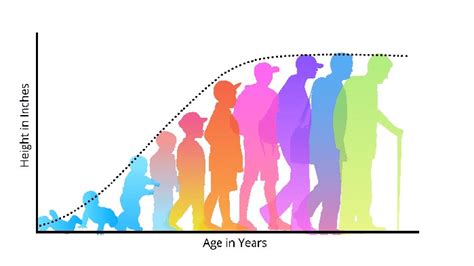
A simple balance test, involving standing on one leg for ten seconds, can be a surprisingly accurate predictor of mortality risk in middle-aged and older adults, according to a study originally published in the British Journal of Sports Medicine and highlighted recently, suggesting it could serve as a quick and accessible tool for assessing overall health and longevity.
The ability to stand on one leg for ten seconds, unaided, offers a glimpse into an individual’s risk of mortality over the subsequent seven years, according to the research. The study, led by Dr. Claudio Gil Araujo from Exercise Medicine Clinic – CLINIMEX in Rio de Janeiro, Brazil, followed nearly 1,700 participants aged 51 to 75 between 2009 and 2020. Approximately 20% of participants were unable to complete the test, and the failure rate increased with age. The research emphasizes that the balance test isn’t just about physical ability; it reflects a complex interplay of factors, including muscle strength, balance, and overall physical fitness, which are all interconnected with overall health and longevity. This test, while not a definitive predictor of death, serves as a practical indicator that can prompt further health assessments and interventions.
The Study: Methodology and Findings
The original study, published in the British Journal of Sports Medicine, aimed to investigate whether a simple balance assessment could provide valuable insights into an individual’s health and mortality risk. Researchers recruited 1,702 participants aged 51 to 75 years old who attended a routine check-up at a clinic specializing in exercise medicine.
The participants were asked to stand on one leg, without any additional support, for ten seconds. They were instructed to place the front of their free foot on the back of their standing leg while keeping their arms by their sides and looking straight ahead. Participants were given up to three attempts to complete the test.
Throughout the seven-year follow-up period, the researchers tracked the mortality rate of the participants. They found a significant correlation between the inability to complete the ten-second balance test and an increased risk of death. Specifically, individuals who failed the test had an 84% higher risk of mortality from any cause compared to those who passed.
The researchers adjusted the results for factors such as age, sex, and underlying health conditions to ensure the findings were accurate and reliable. The study highlighted that the ability to stand on one leg for ten seconds requires a combination of balance, muscle strength, and proprioception (the body’s ability to sense its position in space). These factors are closely linked to overall physical fitness and health, making the balance test a valuable indicator of an individual’s well-being.
The findings of the study have important implications for healthcare professionals and individuals alike. The balance test is a simple, low-cost, and non-invasive assessment that can be easily incorporated into routine health check-ups. It can help identify individuals who may be at higher risk of mortality and who could benefit from targeted interventions, such as exercise programs and fall prevention strategies.
Age and the Ability to Balance
The study revealed a clear correlation between age and the ability to successfully complete the one-leg standing test. As individuals age, their balance tends to decline due to various factors, including loss of muscle mass, decreased bone density, and changes in the nervous system.
The researchers found that the proportion of participants who failed the test increased significantly with age. Among those aged 51 to 55, only about 5% were unable to complete the test. However, this percentage rose to nearly 54% among those aged 71 to 75.
This age-related decline in balance has important implications for older adults. Poor balance is a major risk factor for falls, which can lead to serious injuries, such as fractures and head trauma. Falls are also a leading cause of disability and death among older adults.
The one-leg standing test can be a valuable tool for identifying older adults who are at risk of falls. Individuals who are unable to complete the test should be encouraged to participate in exercise programs that focus on improving balance and muscle strength. These programs can help reduce the risk of falls and improve overall quality of life.
The Significance of Muscle Strength and Balance
The ability to stand on one leg for ten seconds requires a complex interplay of various physical and physiological factors. Muscle strength and balance are two of the most important components.
Muscle strength is essential for maintaining stability and preventing falls. The muscles in the legs, core, and back work together to keep the body upright and balanced. As individuals age, they tend to lose muscle mass, a condition known as sarcopenia. This loss of muscle mass can lead to decreased strength and an increased risk of falls.
Balance is the ability to maintain the body’s center of gravity within its base of support. It involves the coordination of various sensory systems, including the visual system, the vestibular system (inner ear), and the proprioceptive system (the body’s ability to sense its position in space). As individuals age, these sensory systems may become less efficient, leading to impaired balance.
The one-leg standing test challenges both muscle strength and balance. Individuals who are unable to complete the test may have underlying deficits in either or both of these areas. Addressing these deficits through targeted interventions, such as exercise programs, can help improve balance, increase muscle strength, and reduce the risk of falls.
Practical Implications and Recommendations
The findings of the study have several practical implications for healthcare professionals and individuals alike. The one-leg standing test is a simple, low-cost, and non-invasive assessment that can be easily incorporated into routine health check-ups.
Healthcare professionals can use the test to identify individuals who may be at higher risk of mortality and who could benefit from targeted interventions. The test can also be used to monitor the progress of individuals who are participating in exercise programs or other interventions aimed at improving balance and muscle strength.
Individuals can also perform the test on their own to assess their balance and overall physical fitness. If they are unable to complete the test, they should consult with a healthcare professional to discuss potential underlying health conditions and strategies for improving balance and muscle strength.
Some specific recommendations for improving balance and muscle strength include:
- Regular Exercise: Engaging in regular physical activity, such as walking, jogging, swimming, or cycling, can help improve overall fitness and reduce the risk of falls.
- Strength Training: Incorporating strength training exercises into your routine can help increase muscle mass and strength. Examples of strength training exercises include lifting weights, using resistance bands, and doing bodyweight exercises such as squats and push-ups.
- Balance Exercises: Performing balance exercises, such as standing on one leg, walking heel-to-toe, and using a balance board, can help improve balance and coordination.
- Fall Prevention Strategies: Implementing fall prevention strategies in the home, such as removing tripping hazards, installing grab bars in the bathroom, and using assistive devices such as canes or walkers, can help reduce the risk of falls.
Limitations and Future Research
While the study provides valuable insights into the relationship between balance and mortality risk, it is important to acknowledge its limitations.
One limitation is that the study was conducted on a specific population of individuals who attended a clinic specializing in exercise medicine. This population may not be representative of the general population, which could limit the generalizability of the findings.
Another limitation is that the study only assessed balance at one point in time. It is possible that an individual’s balance may change over time due to various factors, such as illness, injury, or lifestyle changes.
Future research should focus on addressing these limitations and expanding our understanding of the relationship between balance and mortality risk. Some potential areas for future research include:
- Conducting studies on more diverse populations to ensure the generalizability of the findings.
- Assessing balance at multiple time points to track changes over time.
- Investigating the underlying mechanisms that link balance to mortality risk.
- Evaluating the effectiveness of different interventions for improving balance and reducing the risk of falls.
Broader Health Implications
The study underscores the broader implications of physical fitness and simple assessments for overall health. While a ten-second balance test might seem trivial, it serves as a microcosm of more extensive physiological functions. Balance, muscle strength, and cardiovascular health are intertwined, and a decline in one area can signal broader health issues.
The fact that a test as simple as standing on one leg can predict mortality risk highlights the importance of preventative healthcare and early detection of potential health problems. It also emphasizes the value of incorporating simple physical assessments into routine check-ups.
Moreover, the study reinforces the importance of maintaining physical activity and healthy lifestyle habits throughout life. Engaging in regular exercise, eating a balanced diet, and managing stress can help improve balance, increase muscle strength, and reduce the risk of falls and other health problems.
The study also has implications for public health policy. Public health initiatives that promote physical activity and healthy aging can help improve the health and well-being of older adults and reduce the burden of age-related diseases and injuries.
Expert Opinions and Perspectives
Several experts in the fields of geriatrics, exercise science, and public health have commented on the significance of the study’s findings.
Dr. Maria Fiatarone Singh, a professor of geriatric medicine at the University of Sydney, Australia, stated that the study “provides further evidence of the importance of balance as a marker of overall health and functional capacity in older adults.” She added that “the one-leg standing test is a simple and practical assessment that can be easily incorporated into routine clinical practice.”
Dr. Stephen Kritchevsky, a professor of epidemiology at Wake Forest University School of Medicine, noted that the study “highlights the importance of maintaining physical activity and balance throughout life.” He emphasized that “regular exercise, including balance exercises, can help improve balance, increase muscle strength, and reduce the risk of falls.”
Dr. Linda Fried, dean of the Columbia University Mailman School of Public Health, commented that the study “underscores the need for public health initiatives that promote healthy aging and prevent falls.” She added that “falls are a major public health problem that can have devastating consequences for older adults and their families.”
These expert opinions reinforce the importance of the study’s findings and highlight the potential for using simple balance assessments to improve the health and well-being of older adults.
The Role of Technology and Innovation
While the one-leg standing test is a simple and low-tech assessment, technology and innovation can play a role in enhancing its effectiveness and accessibility.
For example, wearable sensors, such as accelerometers and gyroscopes, can be used to objectively measure balance and stability. These sensors can provide more precise and detailed information about an individual’s balance than a simple visual assessment.
Mobile apps can also be used to guide individuals through the one-leg standing test and provide personalized feedback and recommendations. These apps can make the test more accessible to individuals who may not have access to healthcare professionals.
In addition, virtual reality technology can be used to create immersive and interactive balance training programs. These programs can simulate real-world scenarios and challenge individuals to improve their balance in a safe and controlled environment.
These technological advancements have the potential to further enhance the effectiveness and accessibility of balance assessments and interventions.
Conclusion: A Simple Test, a Powerful Indicator
The ten-second balance test, as highlighted in the study, serves as a poignant reminder that seemingly simple physical abilities can reflect the complex interplay of physiological functions crucial for overall health and longevity. Its accessibility and ease of administration make it a potentially valuable tool for healthcare professionals and individuals alike, offering a quick and informative assessment of mortality risk.
While not a definitive predictor of death, the inability to perform this test successfully can serve as a catalyst for further medical evaluation and proactive lifestyle changes. It underscores the importance of maintaining physical fitness, particularly balance and muscle strength, as we age. This includes incorporating regular exercise, adopting healthy dietary habits, and implementing fall prevention strategies.
Ultimately, the study emphasizes the significance of preventative healthcare and the power of simple assessments in identifying potential health risks early on. By recognizing the interconnectedness of physical abilities and overall health, we can empower individuals to take proactive steps towards a healthier and longer life. The one-leg standing test is a testament to the fact that sometimes, the most profound insights come from the simplest of observations.
Frequently Asked Questions (FAQs)
1. What is the one-leg standing test and what does it measure?
The one-leg standing test is a simple balance assessment where an individual attempts to stand on one leg, without any support, for ten seconds. They are instructed to place the front of their free foot on the back of their standing leg while keeping their arms by their sides and looking straight ahead. It measures balance, muscle strength, and proprioception (the body’s ability to sense its position in space), reflecting overall physical fitness and health. The test gives individuals the ability to test their own balance and determine if there is a risk of something more serious than just falling.
2. How accurate is the one-leg standing test in predicting mortality risk?
According to the study published in the British Journal of Sports Medicine, individuals who failed the test had an 84% higher risk of mortality from any cause compared to those who passed. While the test is not a definitive predictor of death, it provides a statistically significant indication of increased mortality risk over the subsequent seven years. The study analyzed participants over the course of seven years and determined that those who failed the test were at a higher risk of death.
3. At what age does the ability to perform the one-leg standing test typically decline?
The study revealed a clear correlation between age and the ability to successfully complete the one-leg standing test. The proportion of participants who failed the test increased significantly with age. Among those aged 51 to 55, only about 5% were unable to complete the test, but this percentage rose to nearly 54% among those aged 71 to 75. As individuals age, their balance tends to decline due to various factors, including loss of muscle mass, decreased bone density, and changes in the nervous system. The older you get, the harder to preform the test.
4. What can I do if I am unable to complete the one-leg standing test?
If you are unable to complete the one-leg standing test, it is advisable to consult with a healthcare professional. This could indicate an underlying health condition or a need to improve your balance and muscle strength. Engaging in regular exercise, including strength training and balance exercises, can help improve your ability to perform the test. Fall prevention strategies in the home, such as removing tripping hazards and installing grab bars, can also help reduce the risk of falls. Regular exercise can assist with passing the test.
5. Are there any limitations to the one-leg standing test, and what future research is needed?
One limitation is that the study was conducted on a specific population of individuals who attended a clinic specializing in exercise medicine, which may not be representative of the general population. Also, the study only assessed balance at one point in time. Future research should focus on conducting studies on more diverse populations, assessing balance at multiple time points, investigating the underlying mechanisms that link balance to mortality risk, and evaluating the effectiveness of different interventions for improving balance and reducing the risk of falls. Future research could give more insight on the relationship of the test and general population.









